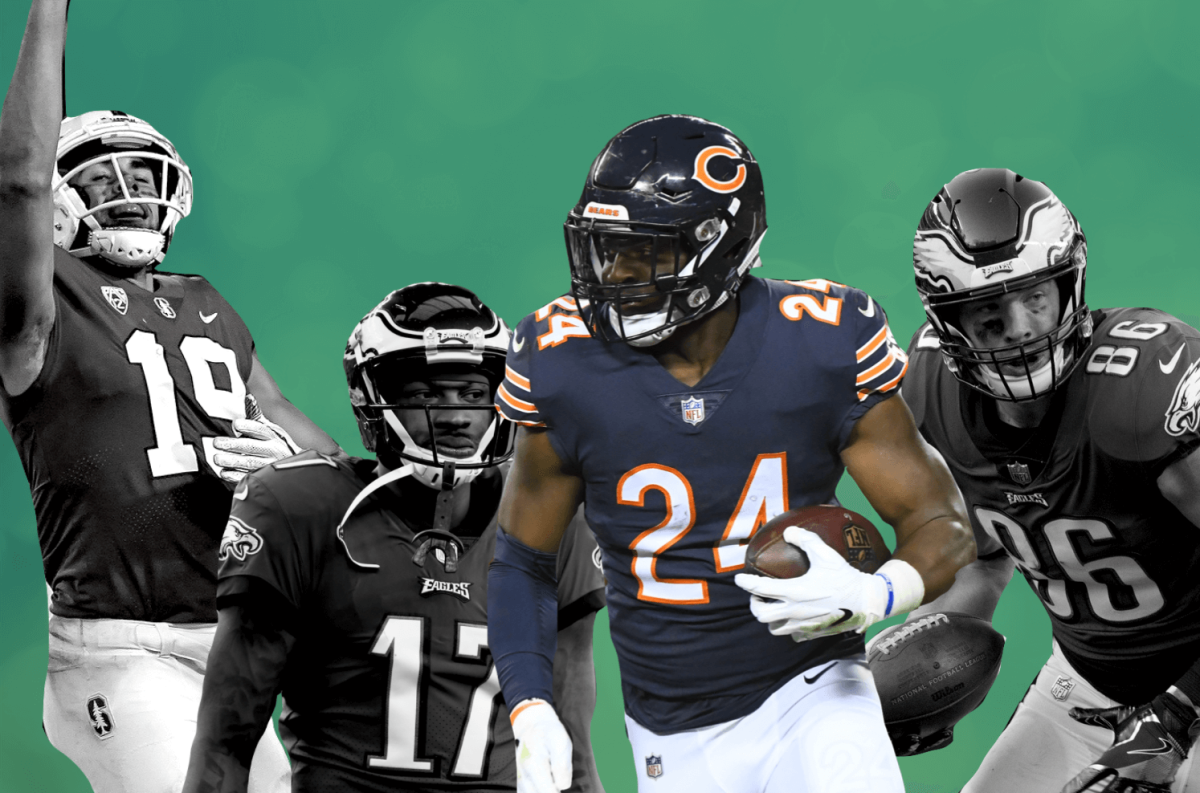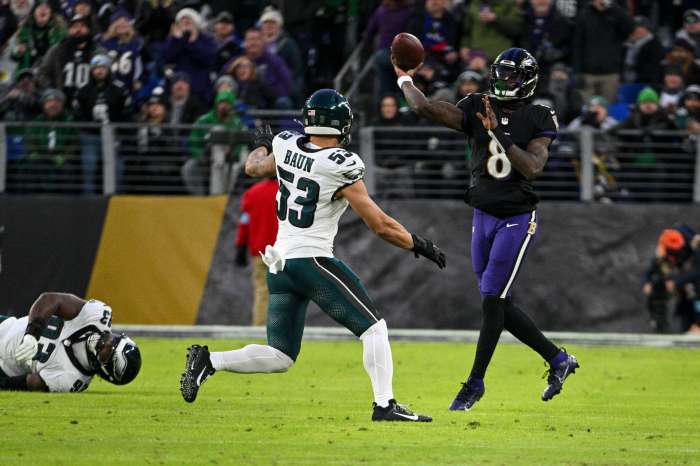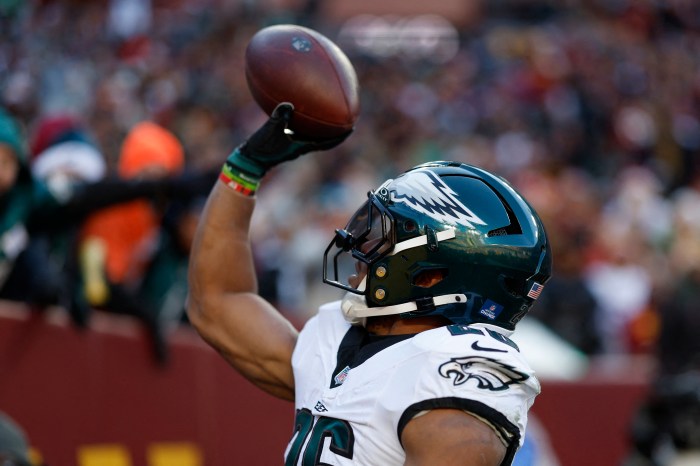After an exciting offseason of trades, signings, and drafting, the Eagles red zone offense looks terrifying. Absolutely terrifying. Not only do the Eagles have a pair of receiving tight ends who continue to be dominant inside the 20, but they drafted jump-ball specialist, JJ Arcega-Whiteside. For context, here’s how one of many packages could look:
| JJ Arcega-Whiteside | WR | 6’3 | 221 lbs |
| Zach Ertz | TE | 6’5 | 250 lbs |
| Dallas Goedert | TE | 6’4 | 260 lbs |
| Alshon Jeffery | WR | 6’3 | 218 lbs |
Good luck to every NFL defense who will face the Eagles this season. With Carson Wentz at the helm, there’s no reason this group won’t obliterate smaller corners and safeties all season long. If you don’t believe me, just look at Goedert’s rookie season, where he was targeted 7 times inside the red zone, catching 5, for 3 touchdowns.
But believe it or not, none of the players listed above are set to be the biggest beneficiary of such a scary grouping. That man is Jordan Howard.
With defenses having to account for a giant receiving corps who all pose threats to box out defenders, it paves open a lighter box for Howard to decimate. It just so happens that he’s used to doing exactly that. If we take a look at Howard’s red zone production last year in comparison to that of Eagles running backs in that same season, what you notice is something staggering.
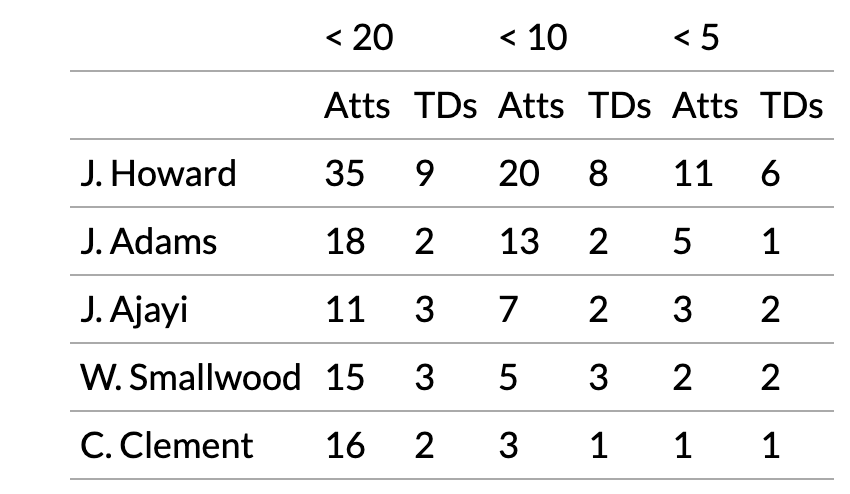
Howard scored almost as many red zone touchdowns in 2018 as the entire Eagles team, despite nearly half the carries. He was especially efficient closer to the end zone, where Philadelphia struggled even more. So if they’re lined up at the five-yard line next year and you focus all of your attention outside, are you really willing to risk letting the young battering ram charge through? It’s a rock and a hard place.
Not only that, but Howard was more efficient from the shotgun (4.3 ypc) than when the quarterback was under center (3.1 ypc) last season — both stats per Player Profiler. He did so despite 26th ranked run blocking efficiency. Smallwood and Adams received the 11th and 5th best blocking efficiency on their runs, respectively. As we know, the Eagles run a lot of their offense out of the shotgun, especially with so many RPO’s mixed into the equation. And if that STILL wasn’t enough to scare defenses, there’s Howard’s improvement as a receiver. Something that Mike Groh noted during his presser yesterday.
“Yeah, I think he’s done a good job in catching the ball on the screens and running back check-throughs and check-downs and those kinds of things. It looks like he has worked really hard at it, and he’s catching the ball well.”
Mike Groh
Howard infamously had troubles with drops early in his career, leading the league in 2016 and tallying another six in 2017. That number fell to one last season. Here are his numbers compared to the other backs on the Eagles’ current roster:
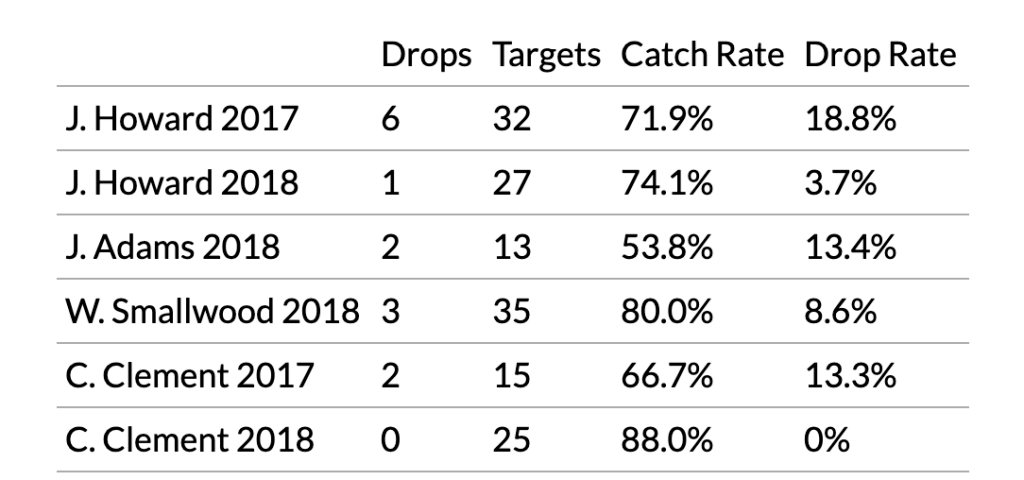
Howard was observed catching passes during Tuesday’s OTA which can only be an impressive sign. If this is a league consensus however and teams don’t account for check-downs and wheel routes, Howard could do even more damage inside the 20.
It’s easy to look at the Eagles red zone offense and salivate over both the height and receiving prowess of the main protagonists, but when all is said and done, this is going up open up a run-game against one of the league’s top offensive lines and a bowling ball running back. Is an even bigger spike in red zone production for Jordan Howard just around the corner? It’s certainly possible.

